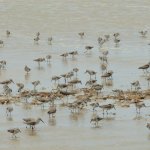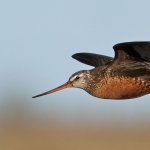By: George Matz
In 2008, a group of birders from the Homer, Alaska area met to organize a nonprofit organization to serve our birding interests. Like most local birding organizations, we wanted to have field trips, meetings and to exchange information via social media. But we also wanted a citizen science project.
Once Kachemak Bay Birders was underway, we reviewed options for a citizen science project. To reduce administrative burden and fundraising, Kachemak Bay Birders is an all-volunteer organization, which means that this project needed to be achievable with only all-volunteer effort and enthusiasm. A shorebird project was clearly at the top of the list. Kachemak Bay is a noted stopover for Pacific Flyway shorebirds and WHSRN Site of International Importance, celebrating the 25th anniversary in 2020. The popular Kachemak Bay Shorebird Festival in May added further support and motivation for a shorebird project. And thanks to the pioneering shorebird monitoring work from 1984-1996 by the late University of Alaska Fairbanks professor emeritus George West, who retired in Homer, we were able to compare results to discern trends.
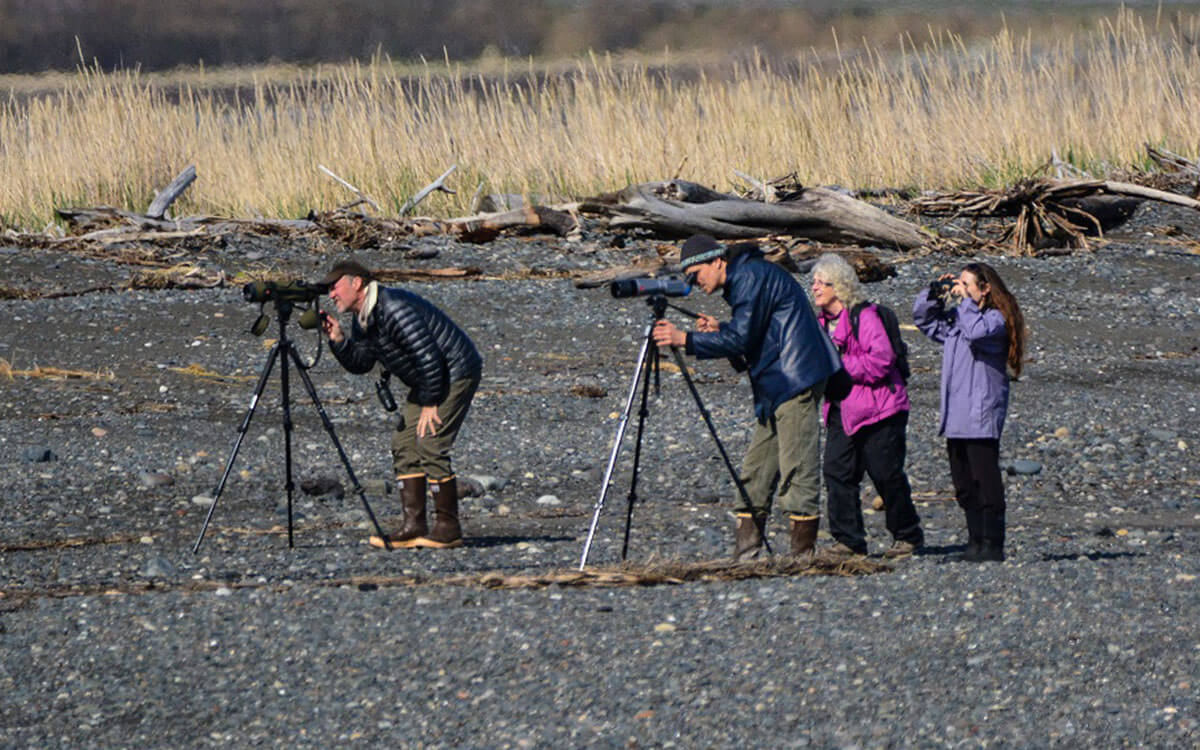
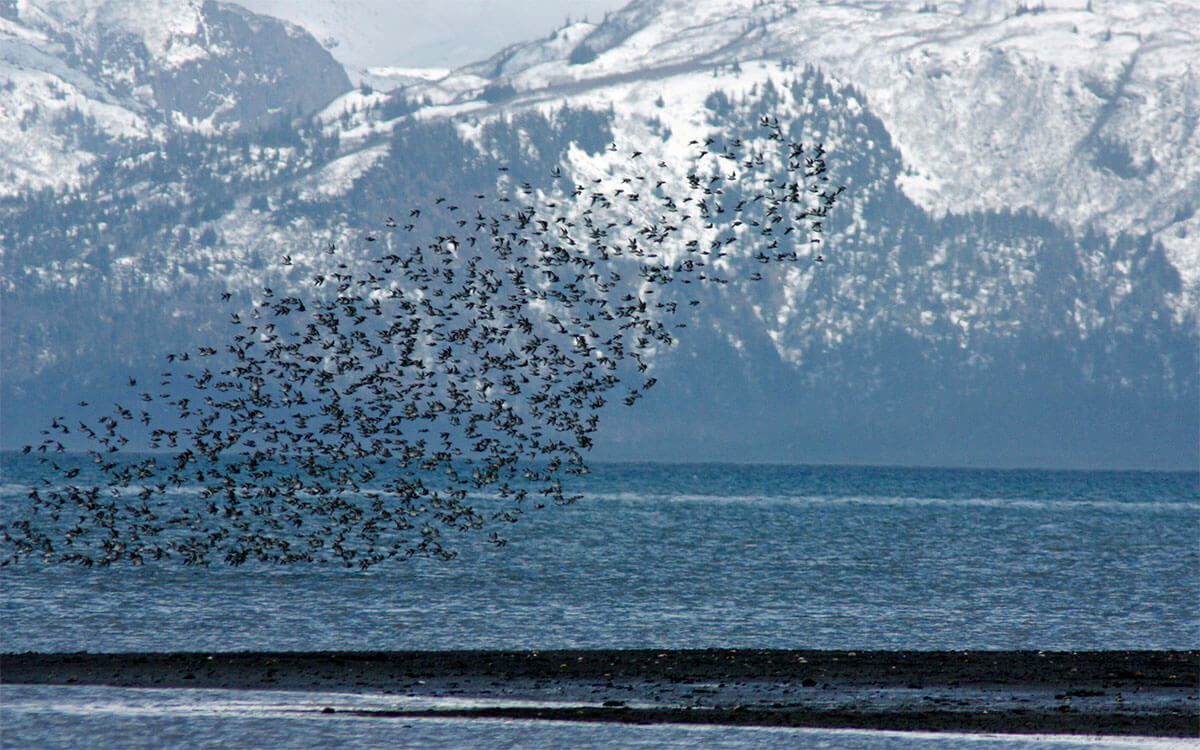
Left: Shoreird Monitoring, Kachemak Bay Birders. Photo: Gary Lyon. Right: A flock of Rock Sandpipers (Calidris ptilocnemis) at Kachemak Bay.
The long-term objective for this citizen science project was to attain a better understanding of the status of shorebird populations in Kachemak Bay, particularly during spring migration. This project also aimed to benefit local birders by offering more opportunity to observe and enjoy shorebirds. Secondary objectives were 1) to contribute information useful to others assessing Pacific Flyway shorebird populations, and 2) to use the monitoring data to help protect shorebird populations and local habitat.
Since much of the intertidal area of Kachemak Bay is fairly remote, we initially limited our efforts to the easily accessible Homer Spit area, which includes a variety of good shorebird habitat. Four years later, we added the intertidal areas of the Kenai Peninsula’s Anchor and Kasilof Rivers, outside the WHSRN site area. The Fox River Flats CHA portion of the WHSRN site also has many shorebirds, but it is difficult to access and difficult to survey.
When selecting the monitoring protocol, United States Fish and Wildlife Service (USFWS) shorebird biologists Rick Lanctot and Brad Andres advised the use of the International Shorebird Survey (ISS). After reviewing the ISS protocol, we decided that some changes were needed.
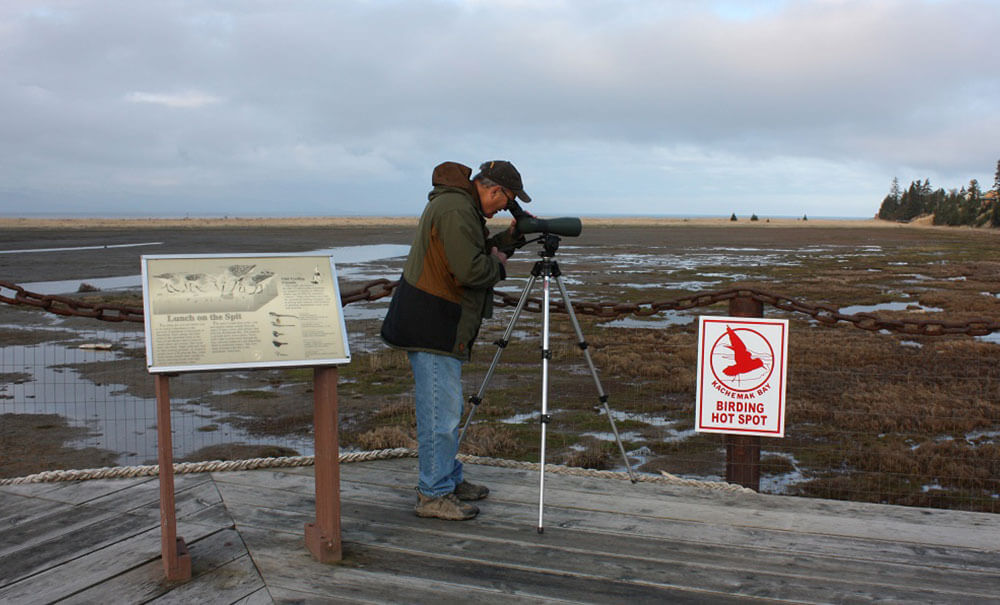
Shorebird Monitoring; George Matz at Mariner Park Lagoon.
Most importantly, the ISS protocol states that monitoring frequency should be every 10 days. Because some shorebird stopovers in Alaska are just a day or two, that frequency would miss observing many migrants. We monitor every 5 days from mid-April to late May, bracketing the spring migration. Even monitoring every five days, we still missed flocks of shorebirds coming and going between monitoring dates. To fill these gaps, we review eBird reports from the area to estimate when and how many shorebirds we might have missed.
Secondly, rather than a protocol based on individual trips, we wanted to use a team approach with each team assigned to a specific site All teams monitor for two hours at the same time. This provided a more complete snapshot of the area and better opportunity for less experienced birders to participate. To minimize duplicate counting we note when a flock of shorebirds moves to another site.
Finally, given the extreme tidal range for Kachemak Bay (highest tides exceed 22.5 ft. and lowest tides are about -6.0 ft.) shorebird observations can vary significantly based on what part of the tide cycle is being monitored. To minimize this variable and add consistency we determined that the optimal time to start monitoring is when the outgoing tide approaches 15.0 feet.
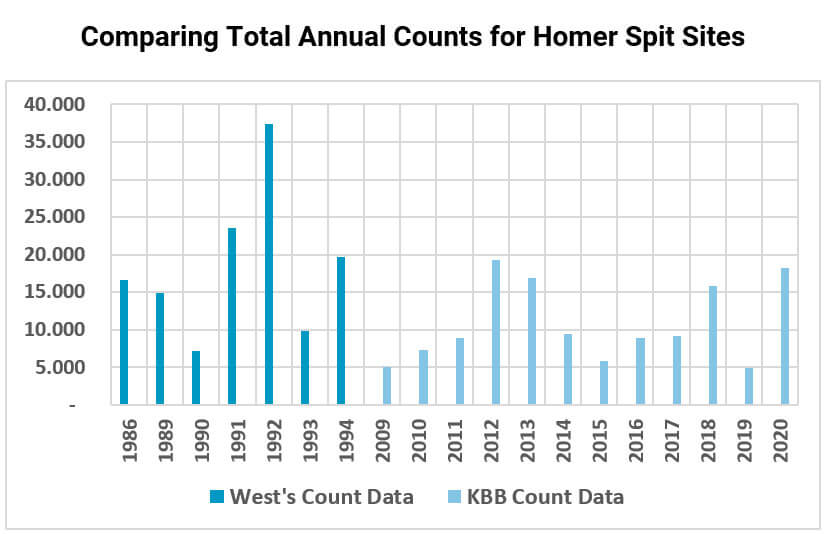
This graph shows that there has been a significant decline in shorebirds since the 80’s, but that the decline may have bottomed out. West monitored daily and the Kachemak Bay Birders monitor every 5 days, so some adjustments to make a more direct comparison.
In 2020, the Kachemak Bay Birders completed its twelfth consecutive year of shorebird monitoring. Between April 11 and May 21, we had nine monitoring sessions using the protocol that has been consistent from the start of the program. We had 47 volunteers participate in at least one monitoring session.
Minor adjustments were made due to the Covid-19 pandemic. Typically the month before monitoring begins we have a meeting to review shorebird identification and build comradery. There is also a social gathering after each monitoring session with teams gathering to review our observations and socialize. With the pandemic, we had to discontinue these indoor functions.
We also restricted sharing of spotting scopes, and electronic eBird reports were required instead of written reports. Requiring the use of eBird, allowed some volunteers to become more comfortable using eBird which will hopefully facilitate increased use during other times of the year.
Last year at Kachemak Bay sites, we observed 26 species of shorebirds, with Dunlin and Western Sandpipers as the most numerous, and counted a total of 20,229 individual shorebirds. Our annual average is 24 species with a count of 13,811 shorebirds. At the Anchor River we saw 17 species of shorebirds with a total individual count of 1,648. This is close to the eight-year average. At the Kasilof River, we saw 22 species of shorebirds, a record high, and had a total count of 18,483 shorebirds, our second highest count.
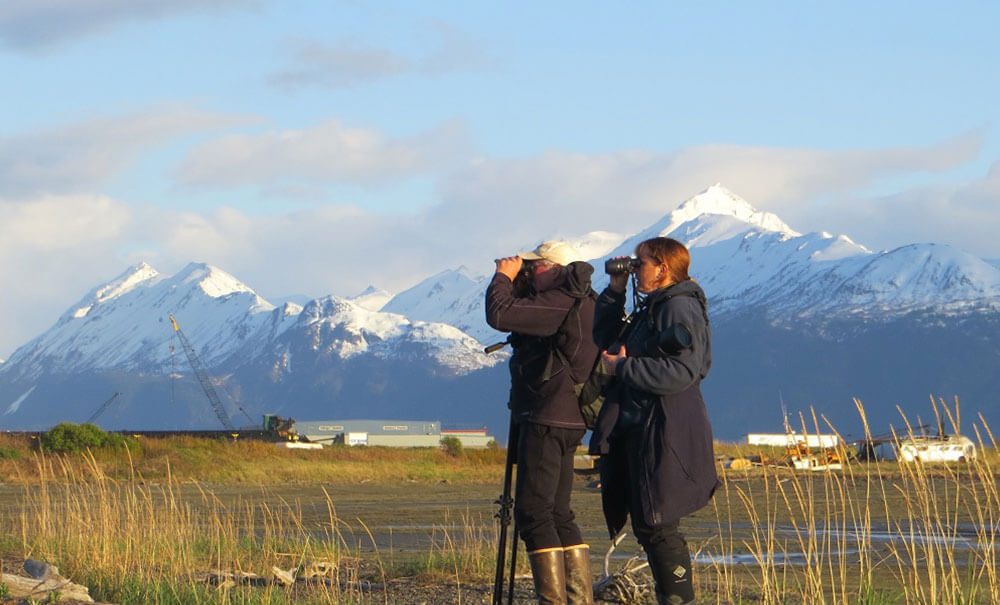
Shorebird monitoring on the Homer Spit. May 2016. Photo: C. Harding.
All observations, plus other bird species seen, were entered in eBird. To review the detailed shorebird monitoring data, go to http://kachemakbaybirders.org/ . The annual report to the Alaska Shorebird Group can be viewed at http://alaskashorebirdgroup.com/annual-project-summaries/
For more information on shorebird monitoring at Kachemak Bay, contact George Matz
Cover Photo: Mud Bay Shorebirds.





